Posted by Ken Schneider
It was a week for Golden-winged Buntings and some other creatures that did not always fit their given names.
Every winter since 2007,when we first saw a Grasshopper Sparrow in the wetlands near our Florida home, we have looked for another. This past winter, while walking along a weedy patch next to a lake in our subdivision, I saw a small bird fly up and almost immediately drop down again out of sight. With patience, we coaxed the bird up into view by squeaking, and to our surprise it flew over to a bush and posed for photos.
This migrant Grasshopper Sparrow is more brightly plumaged than those native to Florida:
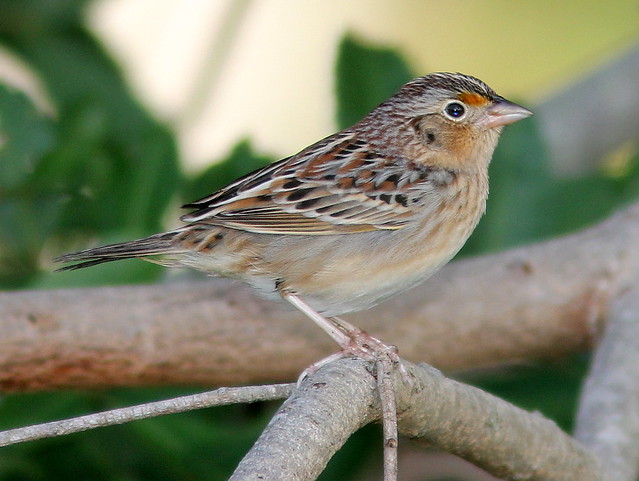
This photo illustrates its distinctive central crown stripe and provides only a glimpse of one of the small bright yellow patches at the bend of its wing that gave the Grasshopper Sparrow its original name of "Golden-winged Bunting:"

I found this photo from Illinois that I had taken in June of 2009. It appeared to justify the label that Audubon put on his painting of a "Golden-winged Bunting:"
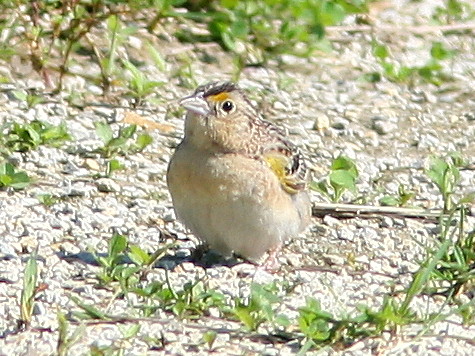
More somber in its beauty,this bird was named, not for the Greek goddess, but for its weak call. Famous because it was the first wild bird banded in America, by Audubon himself, the Eastern Phoebe is a common winter visitor:
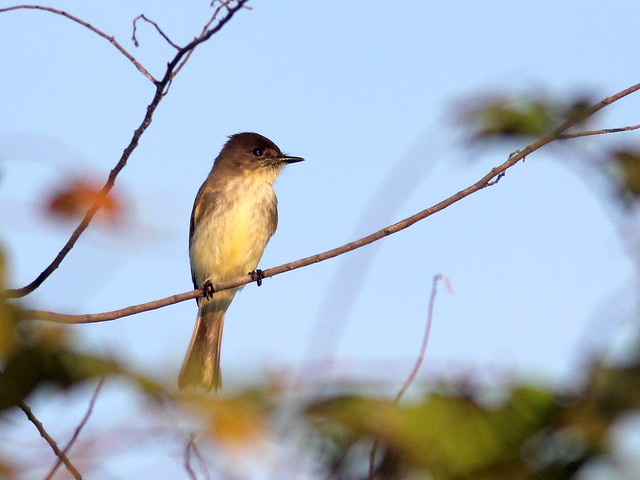
Palm Warblers do not warble, and their long legs are a clue that they spend more time on the ground than in palm trees. This one looks especially peaceful in subdued morning light:
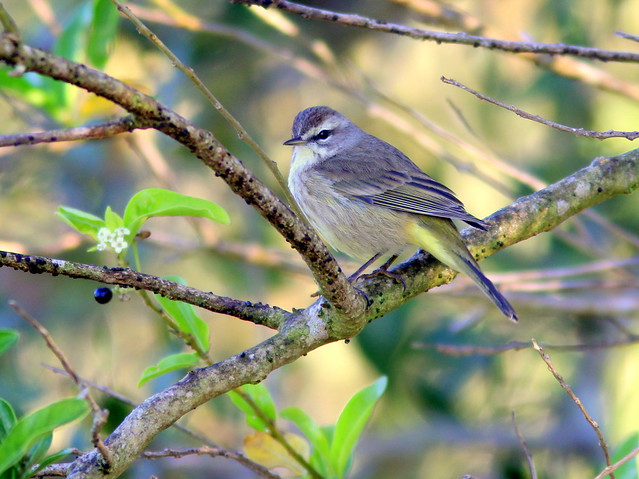
Blue-gray Gnatcatchers are certainly bluish gray, but they expend more effort catching spiders and caterpillars, than flying after gnats:

This gnatcatcher seemed to think I was a gnat, as it launched right at me when I depressed the shutter:
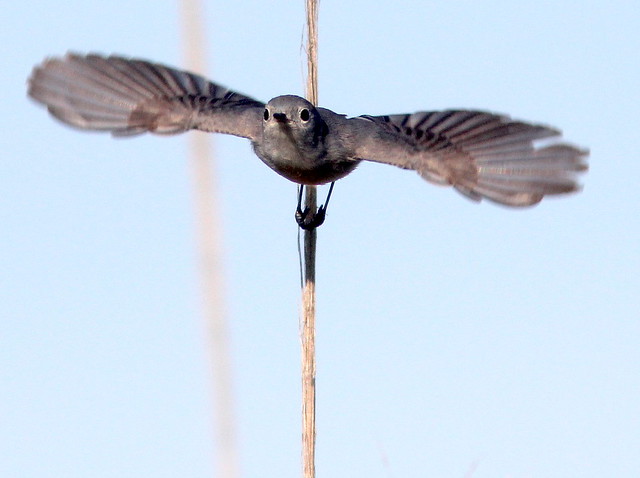
A visit to Chapel Trail Nature Preserve in the neighboring city of Pembroke Pines provided us with great views of an aptly-named Red-shouldered Hawk:
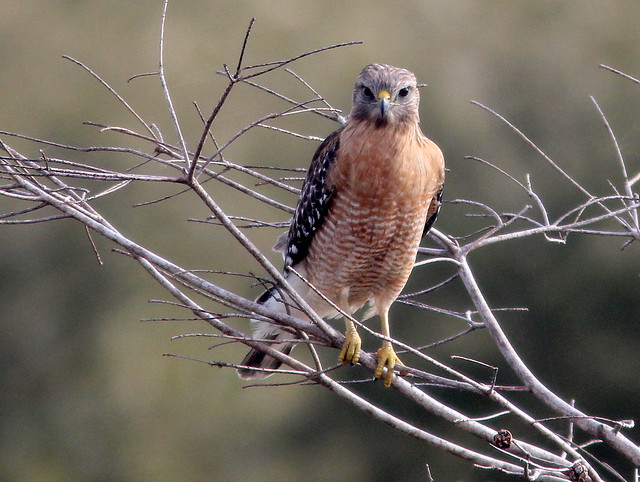
Here is a better view of the red shoulder:

Back in 2008, I photographed this Ring-necked Duck, but wouldn't Ring-billed have been a better name?
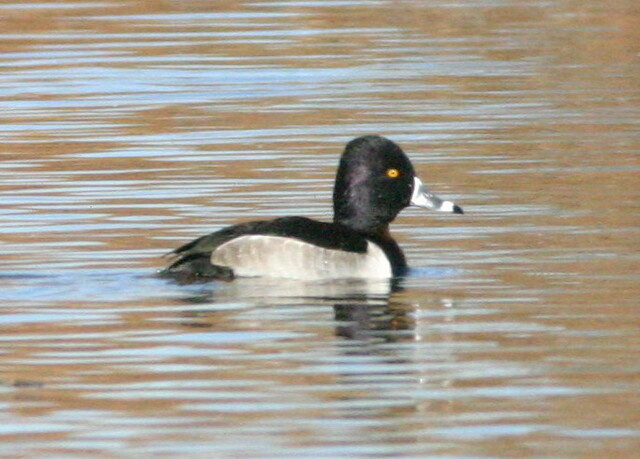
When it came time to name this Red-bellied Woodpecker, was "Red-capped" already taken?:
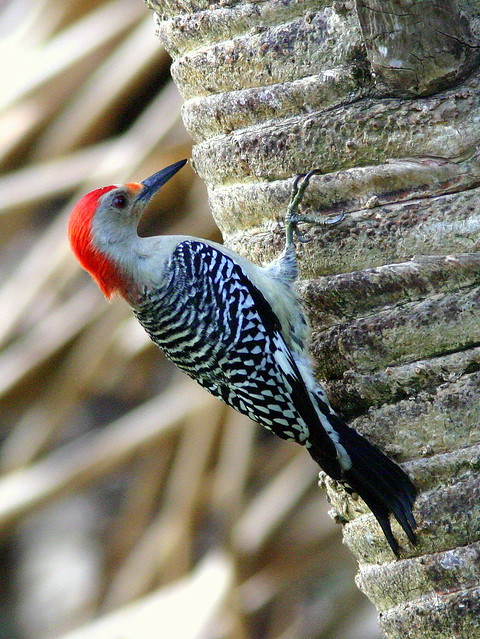
Exotic Purple Swamphen populations have rebounded in spite of a campaign to exterminate them. Thousands have been killed, including over 200 in a single day, but we hope that the gunners have not knocked down any similarly-colored Purple Gallinules:
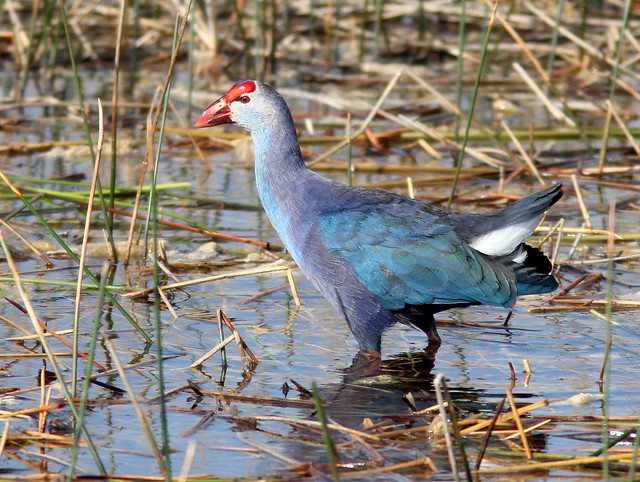
Here is a Purple Gallinule for comparison (I grew up calling them Florida Gallinules):
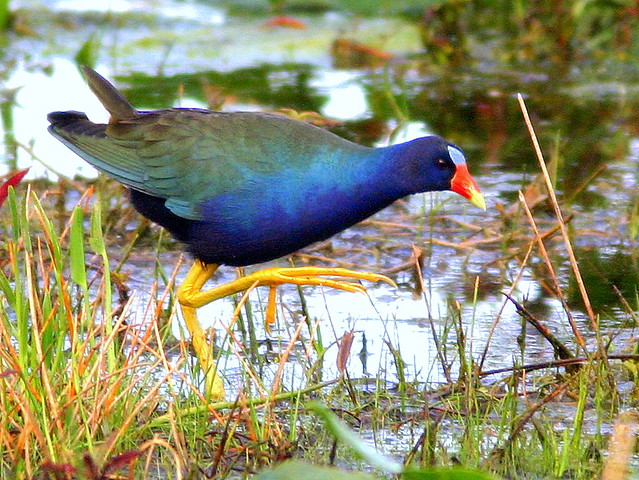
Its relative, an uncommonly beautiful Common Gallinule (as I called it when I was a kid in New Jersey, subsequently named Common Moorhen, but this year its old name was officially restored by the AOU) saw its reflection in the calm water:
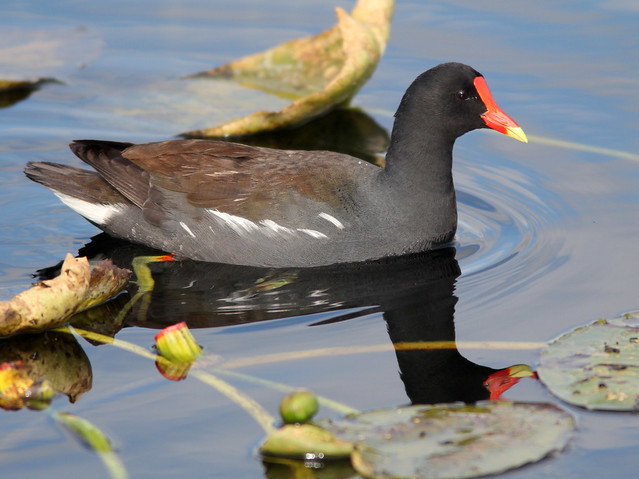
At Tree Tops Park in Davie, Florida, a Green Heron roosted on the boardwalk railing, but it shows not a trace of green:
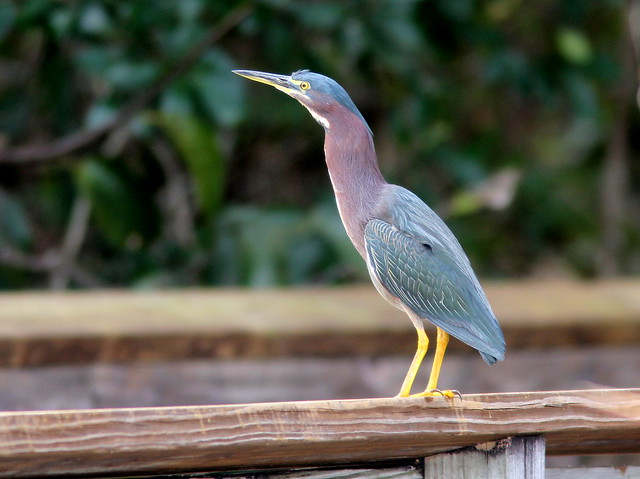
In the wetlands near our home, a Great Egret was ready to take off:

My telephoto lens had a limited field of view, and I could not catch the egret's entire reflection:
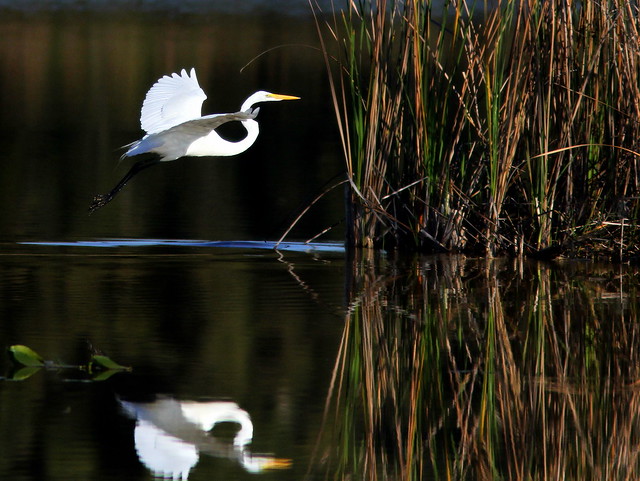
Most of the Little Blue Herons we saw looked like this one, small and blue:

However, a white bird flew close by-- another egret? Its green legs and bluish beak tipped with black revealed it to be an immature Little Blue Heron:

Back-lit against the water, dark feathers are seen, beginning to replace the white:
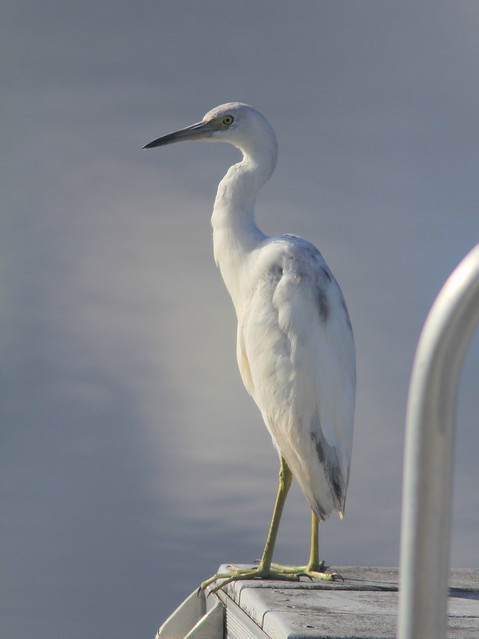
Dragonflies were starting to increase in numbers. Here is a Halloween Pennant:
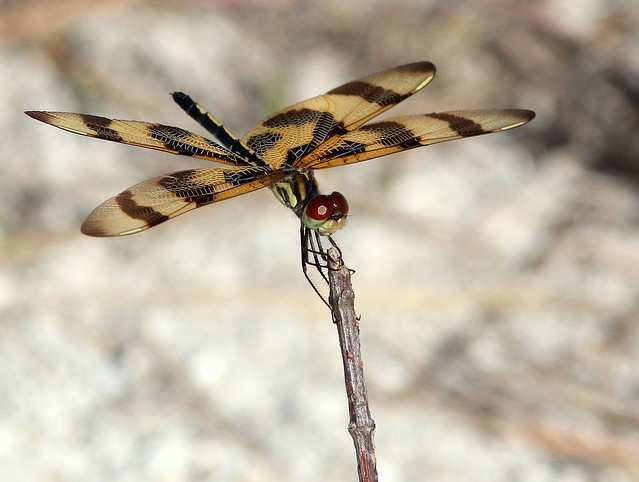
On closer inspection, does it wear a Halloween mask?:
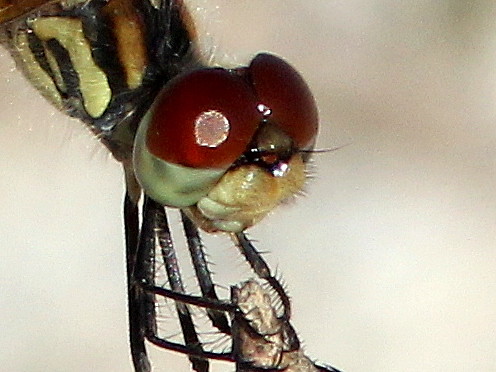
White Peacocks lack feathers, and were numerous that morning:
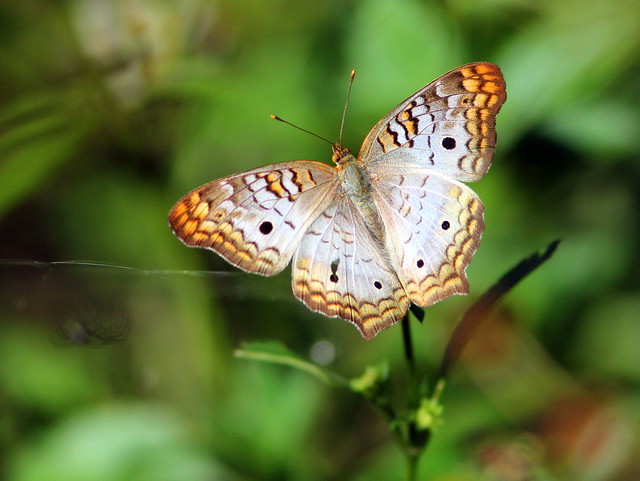
This Queen is a male..
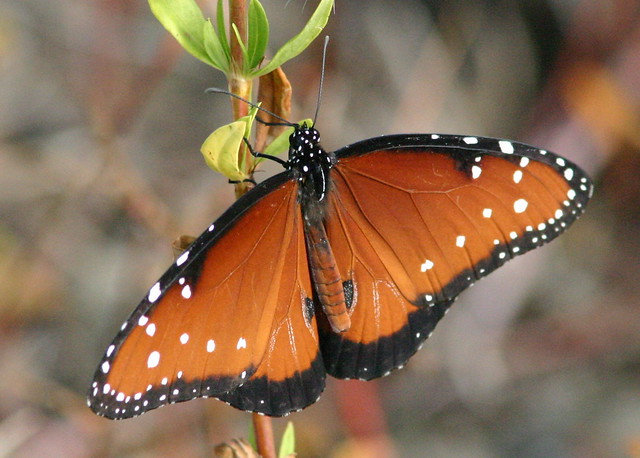
...and so is this guy named Julia:
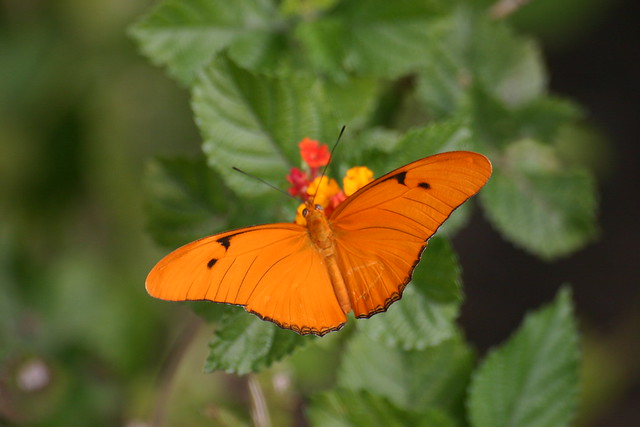


Great post Ken, I always wonder how birds get their names.
ReplyDeleteWonderful post and really great photos.
ReplyDeletedan
Great post Ken. It's funny how much staying power some of the bird names still have, or maybe have all the more, 200 years since they were labeled.
ReplyDeleteI'll call them ring-billed ducks if you will...
Thanks for sharing
what a great variety of shots! enjoyed them, very much!
ReplyDeleteA wonderful post filled with interesting information and fantastic photographs! It really is fascinating to learn how certain birds got their names. All of your photographs are absolutely stunning, it's too difficult to select a favorite. Terrific post!
ReplyDeleteVery nice set of images Dan.. :)
ReplyDeleteShall be following your blog from now on...
Regards,
Angad Achappa
Beautiful and interesting as always Ken!
ReplyDeleteKen: As I read down through this post, I found myself saying, "WOW" - over and over and over. Supremely wonderful images - I especially like the Red-shouldered Hawk in flight and the Red-bellied Woodpecker, but all the images were great!
ReplyDeleteThose pictures are beautiful, thank you and well done :)
ReplyDelete